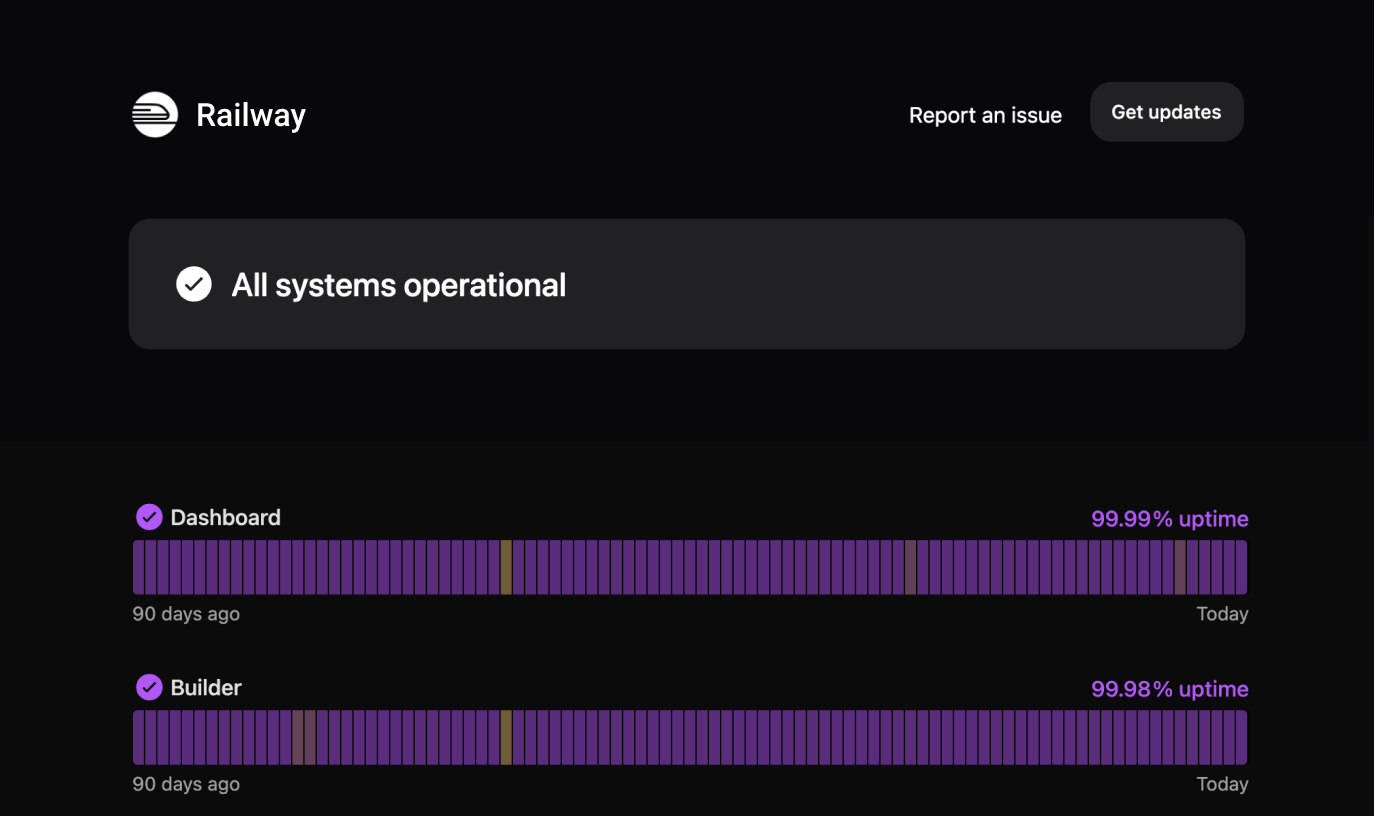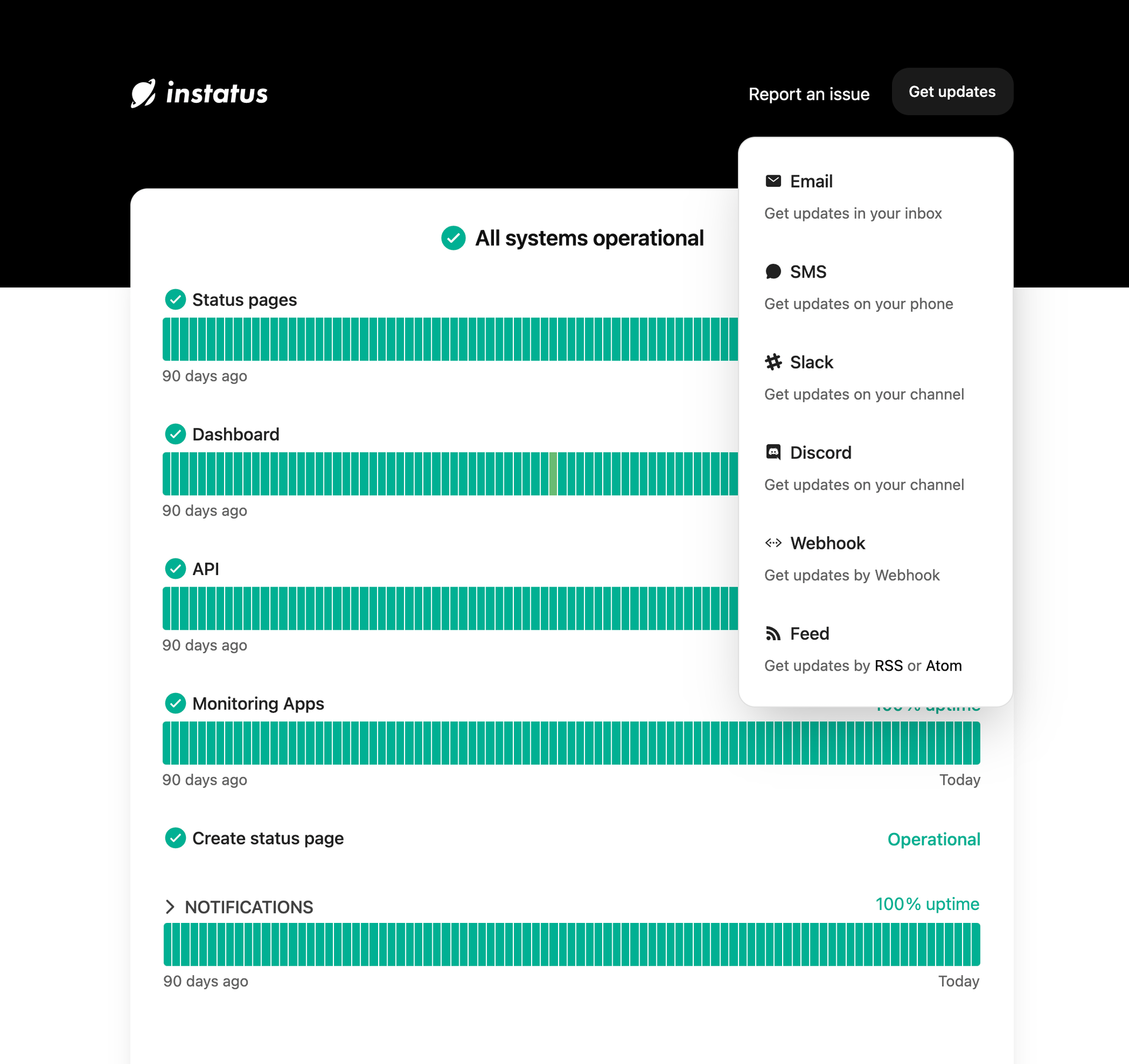Top Incident Management Metrics to Look out for in 2026

Every piece of software experiences downtime or outages at some point during their lifetime. What matters is how efficiently you’re able to deal with these incidents. That’s where incident management metrics come in — they help you quantify how well you manage and respond to incidents.
However, manually tracking all these metrics can be very time-consuming. Luckily, tools like Instatus automatically track KPIs such as uptime, allowing you to discover outages before customers can ask about them.
Before we start listing all the metrics to look out for, let's explain incident management metrics in a bit more detail.
What is Incident Management Metrics?
Incident management metrics are essentially KPIs (Key Performance Indicators), which you can measure or quantify to track your incident response efficiency. These metrics are often used in DevOps workflows as a way to analyze performance quality, response rates, and how you manage sudden outages.
For example, Instatus allows you to monitor your software uptime automatically. This way, you’re immediately notified when any downtime or outages occur.
How can Incident Management Metrics Benefit you?
They Help set Benchmarks and Realistic Goals
Tracking incident management metrics helps streamline your DevOps lifecycle. You can analyze how long the resolution process should take and plan your maintenance around that information. This allows you to set realistic benchmarks and goals for your team to follow.
They Help Identify and Diagnose Problems
Incident management metrics help you quickly identify issues to speed up the resolution process. Make use of monitoring tools like Instatus to automate your uptime tracking, discover trends, and work to prevent major outages from repeating themselves in the future.
They Help Your Team Shift to a More Agile Mindset
Incident management metrics allow you to fix problems as soon as they appear and deploy new updates at a faster rate. This increases your deployment frequency and helps improve your overall customer experience.
Things to Consider When Choosing Incident Management Metrics
Company Size and Complexity
Depending on your company size and the complexity of your IT infrastructure, you’re likely to encounter different kinds of issues.
Type of Company
The type of company you run also affects what incidents you encounter. Consider what industry you’re in and the daily operations you manage.
Industry Regulations
Some industries have regulations about data security, which means certain metrics must be monitored.
Business Goals
Consider your incident management goals. What areas do you wish to focus on? For example, you may wish to improve your resolution speed or customer satisfaction.
List of Incident Management Metrics to Look Out for
#1: Number of Incidents in a set Time (aka Incidents Over Time)
This metric measures how many incidents occur over a specific period of time, such as weekly, monthly, or yearly. Incident Over Time allows you to gauge how frequently you’re encountering issues — if there’s an unusually high trend, you may need to investigate and fix the root cause.
#2: Service Legal Agreement (SLA)
SLA refers to the agreement between you and your customers. For example, if you guarantee them a 99.9% uptime, you need to uphold that promise. Make sure to track your SLA and update it if circumstances change or you’re unable to satisfy certain agreements.
#3: Mean Time to Acknowledge (MTTA)
MTTA refers to the average amount of time it takes for you to start resolving an issue after it’s been detected or you’ve been alerted about it. This is a useful metric for tracking your response time and how quickly you’re able to discover issues.
#4: Mean Time Between Failures (MTBF)
MTBF measures the average time between different software failures. We’re specifically referring to fixable failures here — not detrimental ones. Tracking MTBF allows you to see how frequently a piece of software encounters issues and requires maintenance (this doesn’t include any scheduled maintenance or downtime).
With MTBF, you can measure a system’s stability and get a sense of your upkeep costs — the higher the MTBF, the better. When calculating MTBF, make sure to select a specific period of time to look at, such as the past week or the last 24 hours.
#5: Uptime
Uptime simply refers to the percentage of time your software has stayed up and running. It’s a measure of system availability and most companies aim for as close to 100% uptime as possible. A high uptime means your software experiences little to no downtime, which makes you very reliable to customers.
Tools such as Instatus help you automate your uptime monitoring via customizable status pages. You can also display your uptime to customers and make them aware of any downtime to streamline your incident communication.
#6: First Call Resolution Rate
First Call Resolution Rate (aka FCR) tells you the percentage of customer queries or issues that are fixed at first contact or call. This means resolving incidents during the initial stages of communication without customers having to report the same issue due to a lack of resolution repeatedly. Your FCR helps you track customer satisfaction and the quality of your customer support.
#7: Incident Cost
Incident Cost essentially measures how much each incident costs to repair or resolve. You can use this metric to gauge the cost-efficiency of your incident resolution methods and whether certain methods are too costly for your budget.
When calculating your Incident Cost, it’s important to take into account how long each resolution took and any lost revenue (via disrupted end-user productivity, lost internal productivity, customer churn, etc.)
#8: Time to Recovery (End time) or Mean Time to Recovery (MTTR)
Mean Time to Recovery (or MTTR) refers to the average time it takes to get a system fully operational again after experiencing a system failure. This encompasses the entire resolution process, from initial failure to full recovery. MTTR essentially measures the efficiency of your incident resolution workflow.
Conclusion
Software or IT products in general, often experience system failures and errors, so it’s important to have a good system in place for resolving those incidents. You can use incident management metrics, such as uptime and MTTR, to track how effectively you respond to issues.
With the help of Instatus, you can automatically track metrics such as uptime to ensure you’re notified the minute your systems start failing. Get your free status page today to start automating your uptime monitoring.
Get ready for downtime
Monitor your services
Fix incidents with your team
Share your status with customers



